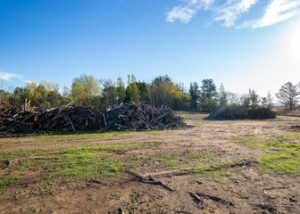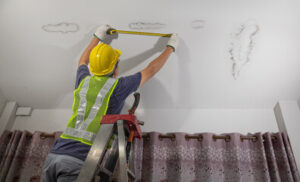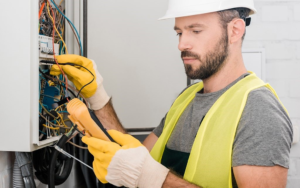Land Clearing can be a huge undertaking, especially in areas with extensive overgrowth. However, advanced machinery and trained professionals allow the process to be done quickly and efficiently.

Unsightly brush and trees can be a nuisance for homeowners. They provide the perfect hiding place for mosquitoes, gnats, and ants. They also offer a home to termites and other less dangerous wildlife.
Whether you are preparing to build a house, an outdoor kitchen or a garden, you will need to have your land cleared to prepare it for construction. This is a difficult task that requires heavy equipment and professional skills. It is best to hire a local service provider. They will ensure that the job is done safely and efficiently.
The cost of clearing land varies depending on the type and size of the property. For example, flat land is usually cheaper than hilly or heavily wooded land. The cost also depends on the condition of the soil, which can affect the amount of debris that needs to be removed. Land Clearing companies should be able to give you an accurate estimate based on the type and size of your property.
Another factor that influences the cost of land clearing is the amount of vegetation that needs to be removed. Some areas have a lot of dense vegetation that must be cleared completely, while others only require the removal of a few trees or bushes. The cost of clearing an area with a lot of thick brush can be much higher than that of clearing a grassy or lightly wooded area.
Aside from the costs of clearing and disposing of debris, there are other fees that can increase the total cost of a land clearing project. These include fees for disposal and permits. Local fees and regulations vary, so it is important to research your area’s specific requirements before attempting a land clearing project.
It is also a good idea to consult with your local environmental protection agency. They can provide you with information on local incentives or offers that may help you save money on the cost of land clearing. In addition, they can inform you about local regulations that protect natural habitats and ecosystems.
Besides protecting the environment, land clearing can improve your property’s safety and aesthetic appeal. It can also eliminate the risk of falling trees or branches, which could cause damage to homes and other structures. It can also reduce pest populations by eliminating the habitats they live in.
Environmental Impact
Land clearing can be a vital part of preparing land for agricultural or other development. However, it is important to consider the environmental impact of the process. Several different techniques can be used to minimize the environmental impact of clearing. These include manual and mechanical methods, as well as herbicides. Depending on the type of land and vegetation, some methods may be more sustainable than others.
One of the biggest factors that affects how long it takes to complete a land clearing project is the size of the property. A large property requires more labor and equipment to clear, which can increase costs. Additionally, the terrain can also impact the time it takes to clear the land. For example, flat land is generally easier to clear than rocky, mountainous terrain.
Many regions have laws and regulations that affect how land is cleared. Some require land clearing to be done in a certain manner or to adhere to specific safety standards. Land clearing professionals are knowledgeable about these laws and will ensure that they follow them. They will also be able to recommend the best method for clearing the land based on its size, type, and location.
Another benefit of land clearing is that it helps with pest control. Dense areas of trees and other plants are a perfect breeding ground for mosquitoes, gnats, and other pests. Land clearing helps to reduce these populations by removing the plants that they thrive in.
Land clearing can also improve the health of the soil. Overgrown vegetation prevents the roots of trees and other plants from receiving adequate nutrients. Land clearing removes this debris and allows the roots to access more sunlight and water. Additionally, it can help cultivate healthy levels of nutrients and make the land more fertile for crops.
Before clearing a plot of land, it is crucial to develop a comprehensive plan that outlines the methods and sequence of tasks to be completed. This will allow you to avoid costly delays and ensure that the job is done properly. In addition, it will ensure that all necessary permits are obtained before the work begins.
Time
The land clearing process involves the removal of trees, bushes, and stumps from a piece of property. It is an essential step for preparing land for construction or agricultural use and can help prevent wildfires by reducing the amount of combustible vegetation on the site. Land clearing is a challenging and time-consuming task, and it is important to hire a professional with the right skills and equipment. A reputable company will ensure that the job is done safely and quickly.
Land Clearing can take several weeks to complete, depending on the size of the property and the type of vegetation being cleared. Professionals follow strict safety guidelines to protect workers and the environment. They also minimize environmental impact by using methods that reduce soil erosion and protect water quality. They can even help you obtain necessary permits and handle zoning requirements.
During the land clearing process, the professionals can use mechanical means to remove the unwanted vegetation. They can also use mulch, which is applied to the ground and covers the topsoil, thereby supplementing it with extra nutrients. The mulch can also help to control weed growth and prevent soil erosion.
When the vegetation on a piece of land becomes overgrown, it can cause problems for other plants and animals. For example, rotting trees can attract mosquitoes and other pests that may spread diseases to surrounding plants. In addition, overgrown vegetation can block sunlight and limit the flow of air.
Another benefit of land clearing is that it can increase the likelihood of a plot sprouting new plants. A plot that is crowded with vegetation disrupts the likelihood of new plants budding, so clearing the land can make it more attractive and healthier for them to grow.
Another benefit of clearing land is that it can improve the health of a plot by providing more room for new plants and trees. Overgrown or dead vegetation can block the flow of sunlight and air, which can damage the roots and leaves of nearby trees. In addition, the debris from these plants can block the soil and promote weed growth. Clearing the land can help to reduce weeds and prevent soil erosion.
Safety
A successful land clearing project depends on a number of factors, including cost, environmental impact, and safety. Using trained and experienced professionals is essential to ensure a smooth and efficient process.
Before the work begins, it is important to inspect the site and determine the type of vegetation that needs to be removed. A plan is then developed and the proper machinery is selected. This step also includes obtaining permits and complying with local regulations. Clearing debris from the site is essential to prevent it from damaging roads and other public infrastructure.
The work involves a lot of heavy machinery and requires workers to be well-trained and adhere to strict safety guidelines. The equipment must be regularly inspected and properly maintained to prevent accidents. It is also important to take precautions against falling branches and other debris, especially if the work is done in an urban environment.
Safety measures include the use of protective gear, regular safety meetings, and two-way communication systems. It is also important to identify and address any potential hazards, such as unstable trees or buried utility lines. In addition, it is a good idea to use environmentally friendly methods to minimize the ecological impact of the project.
In addition to removing unwanted vegetation, Land Clearing can also reduce the risk of fires by creating a firebreak and eliminating a buildup of dead brush and debris. It can also improve the aesthetic of a property by removing clutter and enhancing curb appeal.
The environmental impact of Land Clearing can be reduced by utilizing erosion control techniques, such as mulching and seeding. These techniques will help to prevent soil erosion and sediment runoff, which can damage surrounding water sources and ecosystems. In addition, minimizing the amount of debris produced by the land clearing process will reduce the need for landfills and help to preserve natural habitats. In addition, it is recommended to employ a contractor who uses environmentally responsible practices and adheres to the local environmental regulations. These efforts will not only protect the environment, but they will also help to improve the contractor’s reputation and increase business opportunities.


